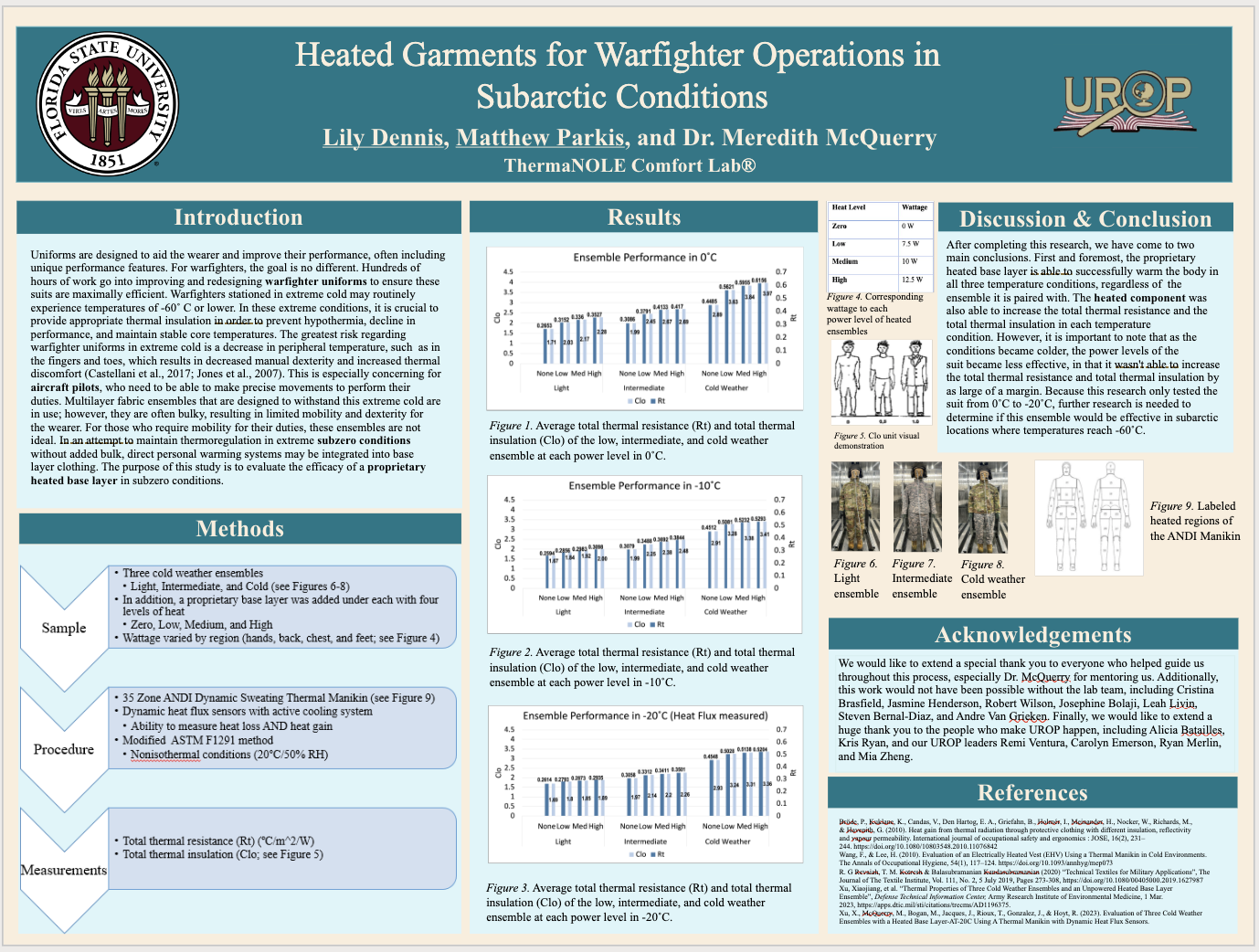Research Symposium
24th annual Undergraduate Research Symposium, April 3, 2024
Lily Dennis Poster Session 4: 2:45 pm - 3:45 pm /120

BIO
I am a sophomore from Tallahassee, Florida. My research interests are in biology and environmental science. After graduating from Florida State, I hope to attend law school and work in the field of environmental law. When I'm not doing research, I participate in Club Soccer, LA program for the biology department, and work as a lifeguard and swim instructor for the City of Tallahassee.
Heated Garments for Warfighter Operations in Subarctic Conditions
Authors: Lily Dennis, Dr. Meredith McQuerryStudent Major: Environmental Science and Policy
Mentor: Dr. Meredith McQuerry
Mentor's Department: ThermaNOLE Comfort Lab Mentor's College: Jim Moran College of Entrepreneurship Co-Presenters: Matthew Parkis
Abstract
Throughout their training and duties, warfighters are often required to endure extreme cold temperatures, regularly reaching -60˚C. These conditions tend to be strenuous, or dangerous, to the body and can impact performance. Adequate protection in subzero conditions is often achieved via multiple fabric and garment layers, however, the mobility of the wearer is often negatively impacted. This makes it difficult for warfighters to make precise motions during combat, especially concerning extremities like finger dexterity, which is vital for pilots or other personnel that require precise movements. Therefore, the purpose of this research was to determine the ability of a proprietary heated base layer system to maintain thermal insulation when wearing cold weather warfighter ensembles in subzero conditions (0 ˚C, -10˚C, -20˚C). Three warfighter combat uniforms (light, intermediate, and cold) were assessed utilizing an ANDI dynamic sweating thermal manikin, in the ThermaNOLE Comfort Lab® at Florida State University to measure thermal insulation. Each uniform was assessed in conjunction with a proprietary heated base layer system at three temperatures and four power levels (no heat, low, medium, and high) to determine the efficacy of maintaining thermoregulation without excessive clothing bulk. Results indicate the heated base layer maintained and, in some cases, significantly increased, the thermal insulation and surface temperature of the manikin, especially in the lower temperature conditions (0 ˚C and -10 ˚C). At -20 ˚C, temperatures were significantly enhanced at the medium and high-power levels. Future research should investigate how to hone each power level to best maintain the thermal insulation.
Keywords: Textiles, Clothing, Warfighter, Uniform, Insulation, Heated Garment


